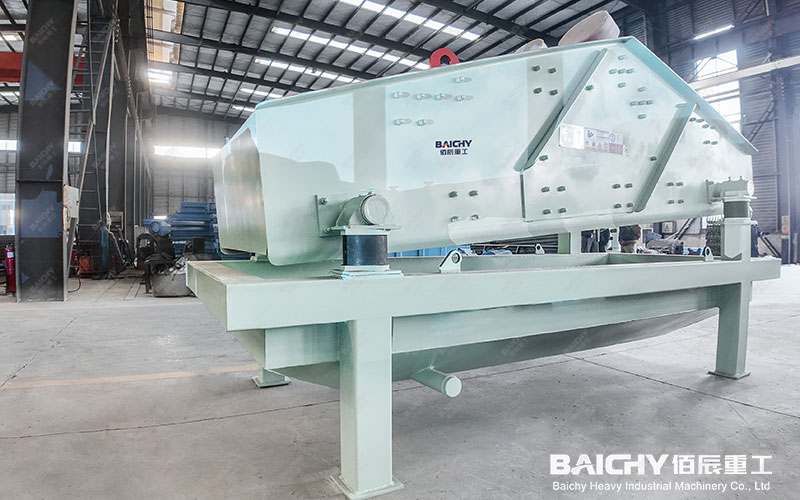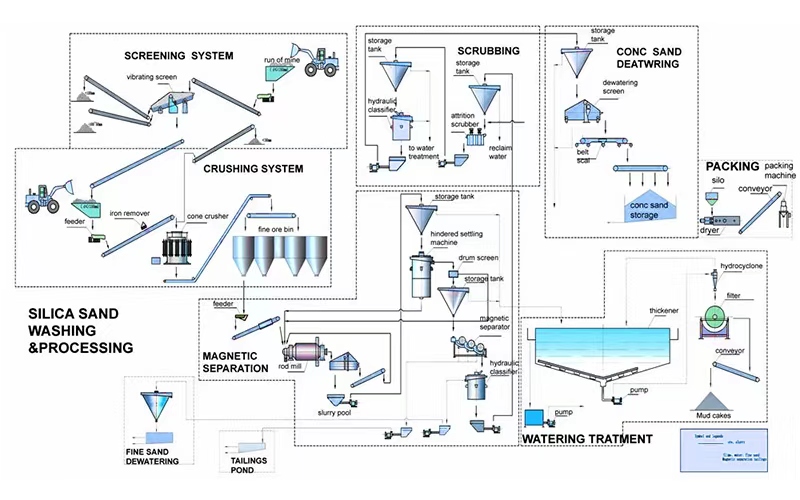
In mining operations, whether it's mineral processing, tailings treatment, or aggregate production, "dewatering" is a crucial step. Poor moisture control can lead to soaring transportation costs, decreased product quality, increased pressure on tailings ponds, and even environmental pollution risks.
A high-efficiency, reliable dewatering screen is the key equipment to solve these problems.
But with a dazzling array of products on the market, which dewatering screen solution is best suited for your mining business?
This article will serve as your selection guide, leading you to a deeper understanding of the core value of dewatering screens and helping you find the best "tailor-made" solution.
I. Why your mining business cannot function without a professional dewatering screen?
A dewatering screenis far more than just "removing water"; it's a lever for improving overall operational efficiency:
• Reduced transportation costs: Effectively reducing the moisture content of materials significantly reduces transportation weight and costs.
• Increased product value: For aggregates such as sand and gravel, controlling moisture content is a prerequisite for meeting construction sand standards and fetching a good price.
• Resource recovery: Efficiently recovering fine sand reduces resource waste and increases revenue. • Environmental Protection and Safety: Dry tailings stacking is safer, reducing tailings dam footprint and dam failure risk, while also facilitating water resource recycling.
• Optimizes Subsequent Processes: Provides qualified materials for subsequent processes such as dry screening, crushing, or bagging.
II. Analysis of Mainstream Dewatering Screen Types:
Find Your "Mr. Right" There is no one-size-fits-all equipment, only the most suitable solution. The following are some common dewatering screens used in the mining industry:
1. High-Frequency Dewatering Screen
◦ Working Principle: High-frequency, low-amplitude vibration breaks the surface water tension of the material, achieving rapid dewatering.
◦ Advantages: Excellent for processing fine-particle materials (such as tailings and fine sand), high dewatering efficiency, and the screen surface is not easily clogged.
◦ Applicable Scenarios: Suitable for applications with high requirements such as tailings dry stacking, fine sand recovery, and slurry dewatering. This is currently the preferred choice for most modern mines.
2. Linear Vibrating Dewatering Screen
◦ Working Principle: The material is thrown up on the screen surface and moves forward in a straight line.
◦ Advantages: Robust structure, high throughput, suitable for dewatering and grading medium to coarse particles.
◦ Applicable Scenarios: Dewatering of crushed stone and manufactured sand in large-scale sand and gravel aggregate plants.
3. Circular Vibrating Dewatering Screen
◦ Working Principle: The screen box moves in an approximately circular motion, causing the material to jump and advance across the screen surface.
◦ Advantages: High screening efficiency, suitable for scenarios requiring both dewatering and high-volume grading.
◦ Applicable Scenarios: Dewatering and grading in coal and metallurgical mines.
III. Five Key Selection Factors: How to Determine the "Most Suitable" Screen?
Choosing the most suitable dewatering screen requires comprehensive consideration of the following five core factors:
1. Material Characteristics: This is the decisive factor. It includes particle size distribution, density, viscosity, and mud content. High-frequency dewatering screens are preferred for fine-particle, highly viscous materials.
2. Processing Capacity: How many tons of material do you need to process per hour? This determines the size of the equipment.
3. Dehydration Target: What is your desired moisture content for the dehydrated material? Do you require it to "clump together when squeezed but crumble easily when released" (~15%), or can you accept a higher moisture content?
4. Operating Environment: Is it a stationary production line or mobile equipment? What are the on-site electricity and water conditions?
5. Investment and Operating Costs: Consider not only the equipment purchase cost but also long-term energy consumption, the lifespan of vulnerable parts, and ease of maintenance.
IV. Professional Solutions: The Value of Partnering with Us
We believe that the most suitable dewatering screen solution is not simply "selling you a piece of equipment," but a comprehensive service system:
• Professional Analysis and Selection Recommendation: Our engineers will analyze your material samples and process requirements to provide the most scientific and economical selection solution.
• Customized Design: We provide non-standard customized services based on your site space and process layout, ensuring seamless equipment integration.
• High Quality and Durability: Using high-quality steel and wear-resistant screen mesh, and a reliable and stable core vibration motor, we ensure long-term stable operation of the equipment and minimize downtime.
• Comprehensive after-sales support: From installation and commissioning, operation training to spare parts supply and rapid response, we provide full lifecycle support.
The most suitable dewatering screen solution for your mining business is one that precisely matches your material characteristics, production goals, and budget constraints, delivering long-term, stable returns. It is a critical investment, not a one-time expense.










